Spring 2024 Seminar Series
Seminars are Wednesdays at 4:00 p.m. in the Larrañaga Engineering Auditorium, Centennial Engineering Center, and are sponsored by CBE, BME, and NSME. Topical seminars are scheduled throughout the semester and can be used for seminar credit.
May 1, 2024
Developing long-life lithium-sulfur batteries: from liquid to solid electrolytes
Ping Liu, Department of Nanoengineering, UC San Diego
4:00 p.m., Larrañaga Engineering Auditorium, Centennial Engineering Center
Abstract: Lithium-sulfur (Li-S) battery is a highly desirable technology featuring high energy density and low-cost materials. However, the challenges with the technology are also well documented. In organic electrolytes, the redox of sulfur goes through a soluble polysulfide mechanism, which greatly impacts the cycle life and practical energy density. In the past few years, we have focused on developing sulfurized polyacrylonitrile, SPAN, as a stable alternative to elemental sulfur-based cathodes. The SPAN reaction does not involve the soluble polysulfide mechanism, which delivers exceptionally long life. Electrolyte engineering, however, remains the key to enable stable lithium metal anode while preserving the stability of SPAN. We show that localized high concentration electrolytes are the optimum choice which form stable interphases on both the Li anode and the SPAN cathode.
SPAN’s limitation lies in its limited sulfur content (~ 43 wt%) and specific capacity (< 700 mAh/g). To further raise cell energy density, it is necessary to revisit elemental sulfur. In this regard, we focus on batteries with sulfide-based solid electrolytes. In order to overcome the poor conductivity and large volume change of sulfur cathodes, we discovered a new sulfur-iodine material that features a semiconductor level electronic conductivity and a melting point of 65oC. These features have enabled a solid state Li-S battery with high power density that is also healable. Degradation due to the volume change can be reversed by remelting the cathode, thus restoring performance. We will concluded by discussing remaining challenges for Li-S battery technologies and potential pathways to bring them closer to commercial reality.
Bio: Dr. Ping Liu is a Professor of Nanoengineering and Director of the Sustainable Power and Energy Center (SPEC) at UC San Diego. Prof. Liu’s research focuses on electrochemical materials science including its applications in energy conversion and storage as well as nanomaterials synthesis. His work on rechargeable lithium batteries include design of both solid and liquid electrolytes, sulfur cathodes, and safety. Prior to joining the Jacobs School faculty in 2016, Prof. Liu was a Program Director at the Advanced Research Projects Agency – Energy (ARPA-E), where he initiated and managed research programs in energy storage for electric vehicles and thermal management technologies to improve building energy efficiency. He was the manager of the Energy Technology Department at HRL Laboratories and was a research staff member with the National Renewable Energy Laboratory (NREL). Prof. Liu has published 150 peer-reviewed papers and has been issued 50 US patents in the broad areas of batteries, fuel cells, sensors and actuators. He received an R&D 100 Award for a solid state battery technology developed at NREL.
April 24, 2024
Tuning the Electronic Properties of Semiconducting Nanoscale Objects by Covalently Tethering π-Conjugated Supramolecular Polymers
Jean-Hubert Olivier, Department of Chemistry and Chemical Biology, The University of New Mexico
4:00 p.m., Larrañaga Engineering Auditorium, Centennial Engineering Center
Abstract: As a product of the dynamic equilibrium between solubilized building blocks and self-assembled structures, supramolecular architectures are fragile compositions where minor changes in temperature, solvent dielectric, and building-block concentration can trigger the dismantlement of superstructures and concomitant loss of their emergent properties. Developing molecular strategies to covalently polymerize non-covalent assemblies can provide entirely new nanoscale platforms with which to “dial-in” structure-function properties that remain elusive by current supramolecular methodologies. This seminar will introduce design principles to staple 1-dimensional supramolecular polymers in solution and on Silicon electrodes. The extent to which this novel approach can be leveraged to modulate the semiconducting properties and light-harvesting capabilities of nanoscale objects will be shown. Exploiting ultrafast transient absorption spectroscopy and spectroelectrochemistry, we will discuss the properties of the excited state products formed following photoexcitation and correlate them to the structural properties of the molecular tethers with which π-conjugated aggregates are stapled. We will also introduce novel design principles to regulate excitonic coupling as a function of tethering strategies and new avenues to capture out-of-equilibrium intermediates to form semiconducting monolayers. These studies demonstrate that the ability to modulate the electronic structures of nanoscale objects, used in conjunction with facile hierarchical organization, offers exceptional promises for the development of optoelectronic materials.
Bio: Jean-Hubert is originally from Strasbourg (France) and attended the University of Strasbourg, where he obtained his M.Sc. in Organic and Supramolecular Chemistry. During his Ph.D. at the University of Strasbourg, he developed new classes of luminescent liquid crystals and studied light-matter interactions in hierarchical materials. He then moved to Duke University in 2011 as a postdoctoral associate to focus on engineering polymer-wrapped carbon nanotube compositions for solar energy capture and conversion. He started his independent career at the University of Miami, where he was promoted to Associate Professor in 2022. In August 2023, he joined the Department of Chemistry and Chemical Biology at the University of New Mexico. He is developing molecular tools to create new classes of structure-function-optimized organic materials constructed from out-of-equilibrium intermediates. In addition to elucidating fundamental electronic processes in these emerging materials, his research program targets applications in solar energy capture and conversion, mechanical energy harvesting, tactile sensors, and organic electronics.
April 17, 2024
Origin of the Entropic Driving Force in Polyelectrolyte Complex Coacervation
Zhen-Gang Wang, Division of Chemistry and Chemical Engineering, California Institute of Technology
4:00 p.m., Larrañaga Engineering Auditorium, Centennial Engineering Center
Abstract: Mixing two solutions of oppositely charged polyelectrolytes under appropriate conditions results in a liquid–liquid phase separation into a polymer-rich coacervate phase and a coexisting polymer-poor supernatant phase. This polyelectrolyte complex coacervation (PCC) has received considerable attention in recent years due to its relevance to membraneless organelles in biology, and applications in biomedical and biomimetic systems. The complexation of oppositely charged polymers has been widely believed to be driven by the entropy gain due to counterion release. In this talk, we show that a large portion of the entropy change is due to solvent (water) reorganization, which we can extract by exploiting the temperature dependence of the dielectric constant. For weakly-to-moderately charged systems under common conditions (monovalent ions, room temperature in aqueous solvent), the solvent reorganization entropy, rather than the counterion release entropy, is the primary entropy contribution. We use this framework to examine the two elementary stages in the symmetric PCC—the complexation between a polycation and polyanion, and the subsequent condensation of the polycation–polyanion pairs by computing the potential of mean-force (PMF) using molecular dynamics simulation. From the calculated PMF, we find that the supernatant phase consists predominantly of polyion pairs with vanishingly small concentration of bare polyelectrolytes, and we provide an estimate of the spinodal of the supernatant phase. Finally, we show that prior to contact, two neutral polyion pairs weakly attract each other by mutually induced polarization, providing the initial driving force for the fusion of the pairs.
Bio: Zhen-Gang Wang received his B.Sc. in Chemistry in 1982 from Beijing (Peking) University, and his Ph.D. in Chemistry in 1987 from the University of Chicago. He did postdoctoral research first in Exxon Research and Engineering Company and then at UCLA. Since 1991 he has been on the Chemical Engineering faculty at the California Institute of Technology, where he is currently the Dick and Barbara Dickinson Professor and Executive Officer of Chemical Engineering.
Wang’s research is the theoretical and computational study of structures, phase behavior, interfacial properties and dynamics of polymers, soft materials, and biophysical systems. His current activities revolve around three main themes: charged systems, including polyelectrolytes, salt-doped polymers, and electric double layers; nucleation or more generally barrier crossing in polymers and soft matter; and nonlinear rheology of polymer gels and entangled polymers.
Wang is a fellow of the American Physical Society, and is recipient of several significant awards and honors, including the Camille Dreyfus Teacher–Scholar Award (1995), the Alfred P. Sloan Award (1996), the Braskem Award from the American Institute of Chemical Engineers (AIChE) (2018), the AIChE Alpha Chi Sigma Award (2023), and the APS Polymer Physics Prize (2024). In 2008, he was awarded the Richard P. Feynman Prize for Excellence in Teaching, Caltech’s highest teaching honor.
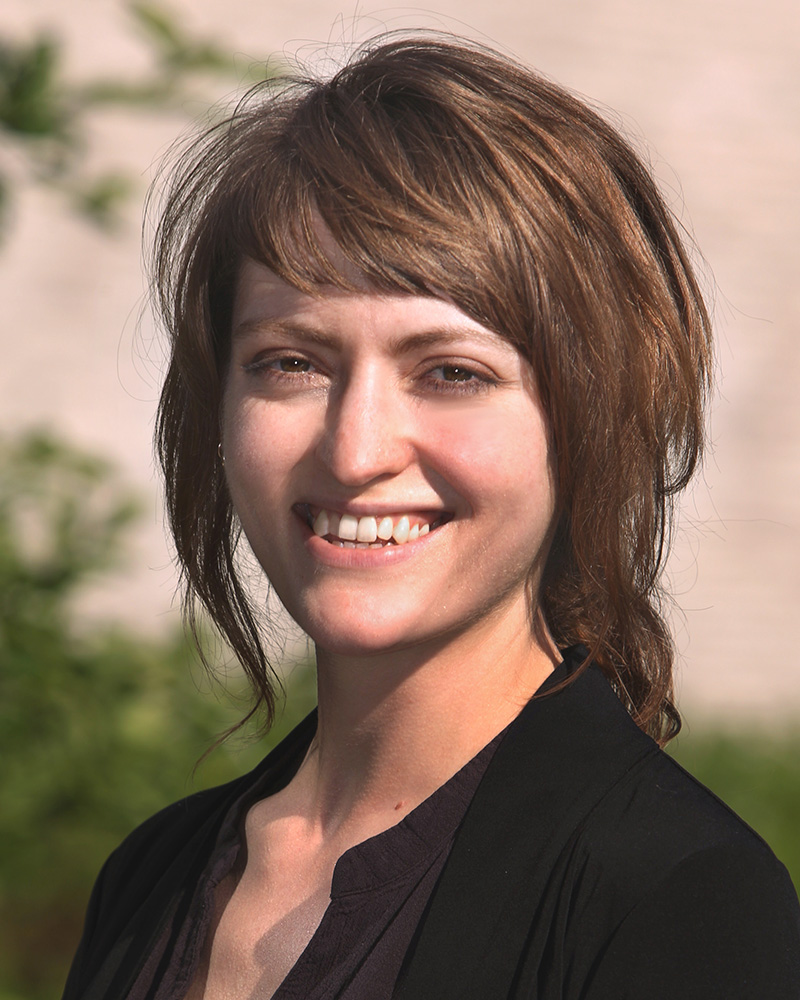
April 10, 2024
Advanced Separation Processes and Materials: towards sustainable water recovery from challenging streams
Allyson L. McGaughey, UNM
4:00 p.m., Larrañaga Engineering Auditorium, Centennial Engineering Center
Abstract: To mitigate and adapt to climate change, freshwater scarcity, and increasing environmental degradation, we must achieve a circular water economy built on resource recovery and, at the same time, confront new (and newly recognized) contaminants. Advanced separation processes and materials are necessary to achieve these goals – enabling sustainable extraction of water and other critical resources, and degradation or separation of challenging pollutants for disposal. Here, I report recent progress in developing and leveraging mechanistic understanding of relationships between process performance and material properties to guide the design of next-generation separation processes.
First, I report a systematic study of wetting in membrane distillation, a separation process that is uniquely promising for challenging, high-salinity streams. In membrane distillation, high wetting resistance is critical to prevent process failure due to salt precipitation (scaling) and reduced surface tension at the membrane surface. I introduce liquid entry pressure distribution as an indicator of wetting resistance and challenge past emphasis on increasing surface hydrophobicity alone. Our results demonstrate that reducing pore size (to reduce intrapore scaling) is more effective than increasing hydrophobicity (to inhibit surface nucleation), particularly in preventing scaling-induced wetting. This results in a fundamental trade-off between wetting resistance and vapor flux that can only be overcome by optimizing key pore parameters.
Second, I discuss the development of polymer brushes as functional materials for water and resource recovery. Zwitterionic polymer brushes have attracted attention to achieve ultra-high fouling resistance with ultra-thin, durable layers that have negligible impact on bulk material properties. However, conventional brush fabrication is complex, multi-step, and oxygen-sensitive. Here, I use polymerization in confinement to achieve scalable synthesis of polymer brushes on membrane substrates at ambient conditions. Results show that while increasing confinement accelerates brush growth, brush heterogeneity can limit fouling resistance. Methods to achieve high fouling resistance for thin brush layers are identified.
Bio: Allyson L. McGaughey joined the University of New Mexico in January 2024 as an Assistant Professor in the Gerald May Department of Civil, Construction, and Environmental Engineering. Her research focuses on developing and leveraging mechanistic understanding of relationships between materials fabrication, properties, and performance in separations processes for water reuse, resource recovery, and environmental remediation. Prior to joining UNM, she was a Distinguished Postdoctoral Fellow at the Andlinger Center for Energy and the Environment at Princeton University. She received her master’s and doctoral degrees in Civil and Environmental Engineering from the University of Southern California and her bachelor’s degree in Chemical Engineering from the University of Washington.
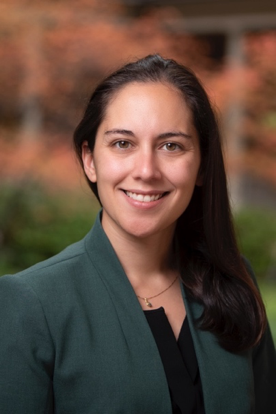
March 13, 2024
Variations in fibrosis–the importance of biologic factors
Joscelyn C. Mejías, PhD, Johns Hopkins University
4:00 p.m., Larrañaga Engineering Auditorium, Centennial Engineering Center
Abstract: Fibrosis affects a wide range of clinical disorders including chronic wounds, the foreign body response (FBR) to implants, and diseases such as uterine fibroids. Analysis of the 2019 Global Burden of Disease study found that mortality from fibrotic diseases has steadily increased up to 17.8% since the 1990s. Aging is a significant contributor of fibrotic disease. With aging, immunologic changes are known to occur, including increased susceptibility to inflammatory age-related diseases, reduced responses to infections and vaccines, and poor wound healing. To develop more precise immunomodulatory systems to reduce fibrosis and promote tissue regeneration our goal is to understand how biologic factors (e.g. age, sex, ancestry) alter the immune response in chronic fibrosis. In my talk, I will discuss my work in immune changes with age and sex in the FBR. To recapitulate the FBR, we use a murine model of traumatic injury (volumetric muscle loss) treated with a pro-inflammatory material (polycaprolactone) to elucidate differences by sex in the immune-mediated fibrosis across lifespan. I will then discuss the understudied fibrosis of uterine fibroids, highlighting aspects of the immune microenvironment within this disease. Together, these studies highlight the opportunity for improved understanding and targeting of fibrosis to improve human health.
Bio: Dr. Joscelyn Mejías is a postdoctoral fellow in the Elisseeff lab at the Translational Tissue Engineering Center at Johns Hopkins University. She received a BS in Bioengineering with the Distinction in Research and Creative Works and a BA in Asian Studies from Rice University; she earned her MS and PhD from the joint Wallace H. Coulter Department of Biomedical Engineering at the Georgia Institute of Technology and Emory University. Dr. Mejías’ current work is on understanding the immune microenvironment during fibrosis including the foreign body response (FBR) and human uterine fibroids. Her work on the impact of biological factors (age, sex) in the FBR has been supported by the 2022 School of Medicine Postdoctoral Research Accelerator Award and the NIH-NIA MOSAIC K99/R00; for her mentoring and work in uterine fibroids she was awarded the 2023 L’Oréal For Women in Science award.
March 6, 2024
Insights into Catalyst Design: From First-Principles to Industrial Style Electrolyzers
Ryan T. Hannagan, Stanford University
4:00 p.m., Larrañaga Engineering Auditorium, Centennial Engineering Center
Abstract: Heterogeneous catalysts are used in most industrial scale chemical transformations. As we seek to develop new processes that are more sustainable, we will also need to rapidly develop a host of new catalytic materials. However, the enormous complexity of heterogeneous catalysts means that most catalysts are designed with an inefficient “guess-and-check” approach. Theory led design of catalysts is extremely rare. In this talk, I will discuss how the well-defined nature of single-atom alloy catalysts has made unambiguous modeling with theory and surface science feasible. While Rh is not generally considered for alkane dehydrogenation, first-principles calculations revealed that Rh atoms disperse as single-atom sites in Cu and exhibit low alkane C-H activation barriers. Surface science experiments confirmed these predictions, and together, these results informed the design of a highly active, selective and coke resistant RhCu nanoparticle catalyst that enables low-temperature non-oxidative thermal propane dehydrogenation. I will also discuss the development of new methods which enable the operando investigation of catalyst dynamics in realistic high-performance water electrolyzers.
Bio: Ryan Hannagan is currently a postdoctoral scholar at Stanford University in the Chemical Engineering Department working with Thomas Jaramillo on developing methods to examine catalyst dynamics in realistic electrolyzers under operando conditions. He received his PhD in Chemistry in 2022 from Tufts University advised by Charles Sykes. His dissertation work focused on fundamental surface science studies of single-atom catalysts to improve a-priori design of novel heterogeneous catalysts. He received his B.S. in Chemistry and Environmental Geoscience from the University of Massachusetts Lowell in 2016 where he studied heavy metal detection with electrochemical sensors with David Ryan.
March 4, 2024
Design of cell-instructive biomaterials in biomedical applications
Renato S. Navarro, Stanford University
4:00 p.m., Larrañaga Engineering Auditorium, Centennial Engineering Center
Abstract: Cells have evolved complex systems to sense and respond to a diverse range of biophysical and biochemical cues, leading to differences in cell development, function, and death. To understand the signals that impact cell behavior, we use synthetic matrices to study the microenvironmental cues that drive these changes. However, decoupling these signals and mimicking the richness of the cellular microenvironment is a chemistry and engineering challenge. Leveraging a philosophy that promotes materials development that is sustainable, scalable, and clinically relevant, my research combines the molecular design creativity of chemists with the application-oriented mindset of biomaterial engineers to better mimic the intricacy of the native extracellular environment. I use this approach to formulate cell-instructive materials to advance biological understanding and provide tools for regenerative medicine. For example, I developed a mechanically tunable hydrogel platform for 3D cell culture wherein we leverage hydrophobic interactions of a protein polymer to tune hydrogel stiffness. In a separate project, I created a hydrogel that combines both static and dynamic covalent bonds that are viscoelastic yet stable for 3D bioprinting of cardiovascular models. Lastly, I demonstrate that tuning the hydrophilicity and void space of tissue-engineered blood vessels prevents thrombosis and promotes beneficial remodeling in rat models. The lessons learned from these projects can be used to develop nextgeneration in vitro models and in vivo therapies for diverse biomedical applications.
Bio: Renato S. Navarro is a first-generation and non-traditional student. Before pursuing a formal education, he undertook a career in the military that sparked his passion for engineering and regenerative medicine. Dr. Navarro began his higher education at San Antonio Community College before moving to St. Mary’s University, where he majored in Biochemistry. After receiving an M.S. in Chemistry at Texas State University – San Marcos, Dr. Navarro attended the University of Michigan, earning a Ph.D. in Macromolecular Science and Engineering. During this time, his research focused on developing sustainable biomaterials for cardiovascular engineering. As an NIH K99 Postdoctoral Researcher at Stanford University, Dr. Navarro’s interest has been developing injectable hydrogels to deliver therapies after a heart attack. Besides his research, Dr. Navarro has a passion for mentorship and service. At Stanford University, he has mentored students from the Stanford BIO-X summer research program, Stanford Undergraduate Research Fellowship, and Foothill Community College, earning him the BIO-X Star Mentorship Award. Additionally, he serves as a board member for the Stanford Latinx Postdoc Association and assists in recruiting efforts for underrepresented minority postdocs through the Stanford Postdoctoral Recruitment Initiative in Sciences and Medicine program. Ultimately, he aims to lead a research team that pursues comprehensive solutions to cardiovascular clinical challenges via chemistry and materials engineering approaches.
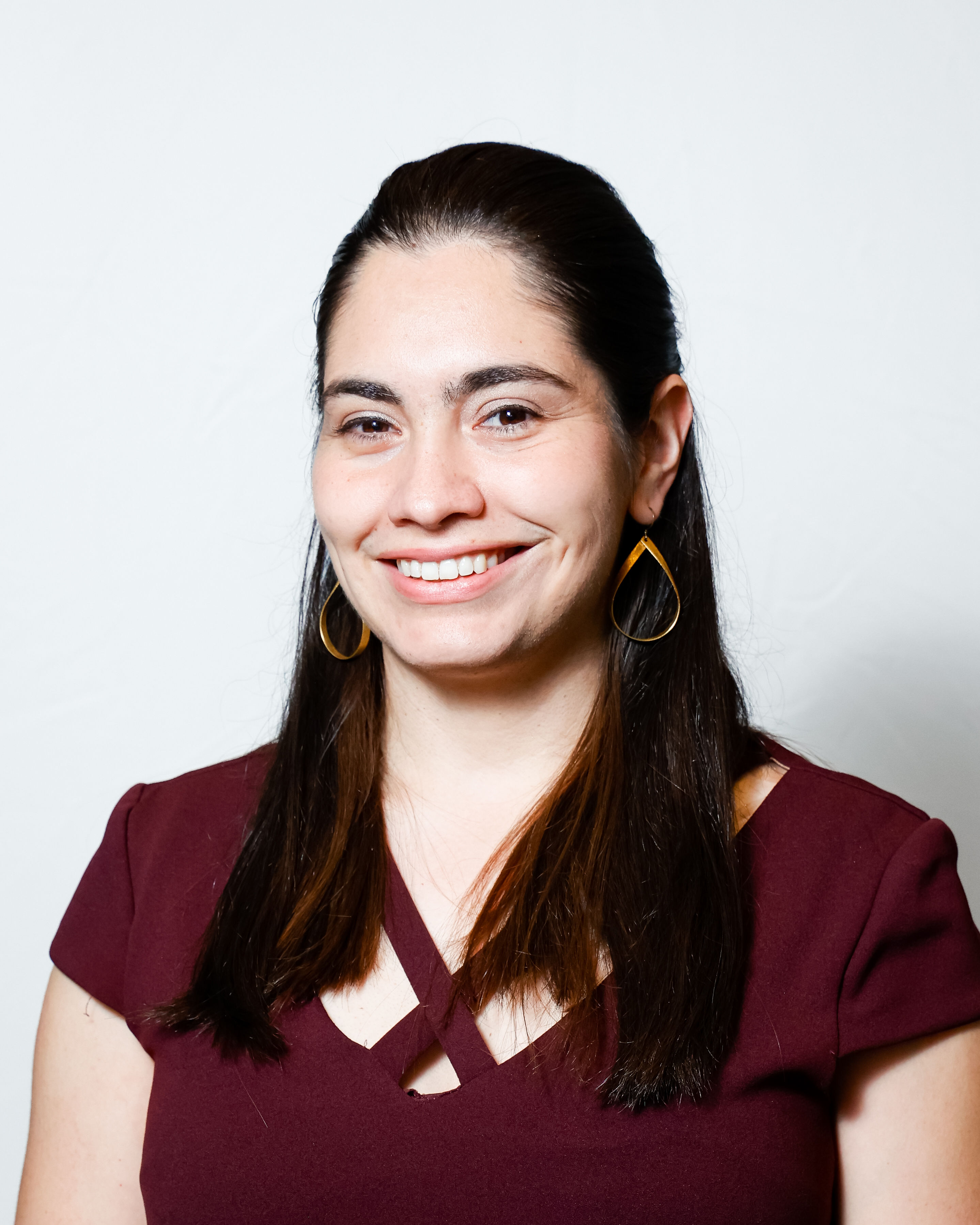
February 28, 2024
Engineering Materials to Mimic Biology
Marissa Gionet-Gonzales, UC Santa Barbara
4:00 p.m., Larrañaga Engineering Auditorium, Centennial Engineering Center
Abstract: Tissue engineering and modeling are vital for improving human health. Several organs in the body can become damaged, due to age, disease, or injury, and are not able to fully regenerate to their original state. Additionally, tissue modeling allows us to understand how human tissues work without directly testing on humans, leading to the development of safer therapies. Pursuing these applications require three key tools: (1) Characterization of biological samples (2) Engineering biomaterials to mimic biological samples and (3) Incorporation of cells and their secretions. Using these tools, I have shown that we can engineer biomaterials to mimic certain aspects of tissue, resulting in therapeutic responses from cells. This includes engineering materials to retain certain pro-regenerative factors secreted by cells to improve bone and muscle repair. I have also engineered materials to mimic heart viscoelasticity. Viscoelasticity is important to implement in our materials, as it is exhibited by all tissues in the body and can influence several cell functions. To mimic this key trait, I have measured the viscoelasticity of human and porcine tissues using rheometry and Microindentation and have mimicked it in a hydrogel biomaterial. I have found that heart tissue is fast relaxing compared to other soft tissues in the body, and that this relaxation decreases during disease in the endocardium due to fibrosis. Surprisingly, however, the epicardium shows increases in viscoelasticity due to the presence of epicardial fat. Therefore, during heart disease, the endocardium becomes less viscoelastic, but the epicardium becomes more viscoelastic. Additionally, I have engineered a hydrogel to mimic cardiac viscoelasticity to interrogate cell response to these viscoelastic cues.
Bio: Dr. Marissa Gionet-Gonzales currently works in Dr. Ryan Stowers and Dr. Beth Pruitt’s lab at UC Santa Barbara as a President’s Postdoctoral Fellow (PPFP), American Society for Engineering Education (ASEE) eFellow and American Heart Association Fellow. Marissa’s research interests lie in engineering biomaterials to probe important mechanobiological questions related to tissue regeneration and disease. Her current research focuses on measuring the viscoelastic properties of human heart tissue samples and mimicking them in a hydrogel biomaterial. Using these hydrogels, she is able to understand how this understudied mechanical property influences iPSC cardiomyocyte cell function, leading to improved cardiac cell models. During her PhD, she worked in Dr. Kent Leach’s lab as a National Science Foundation Graduate Research Fellow. There she developed a cell and biomaterial platform capable of retaining cell secreted therapeutic components for enhanced skeletal muscle regeneration.
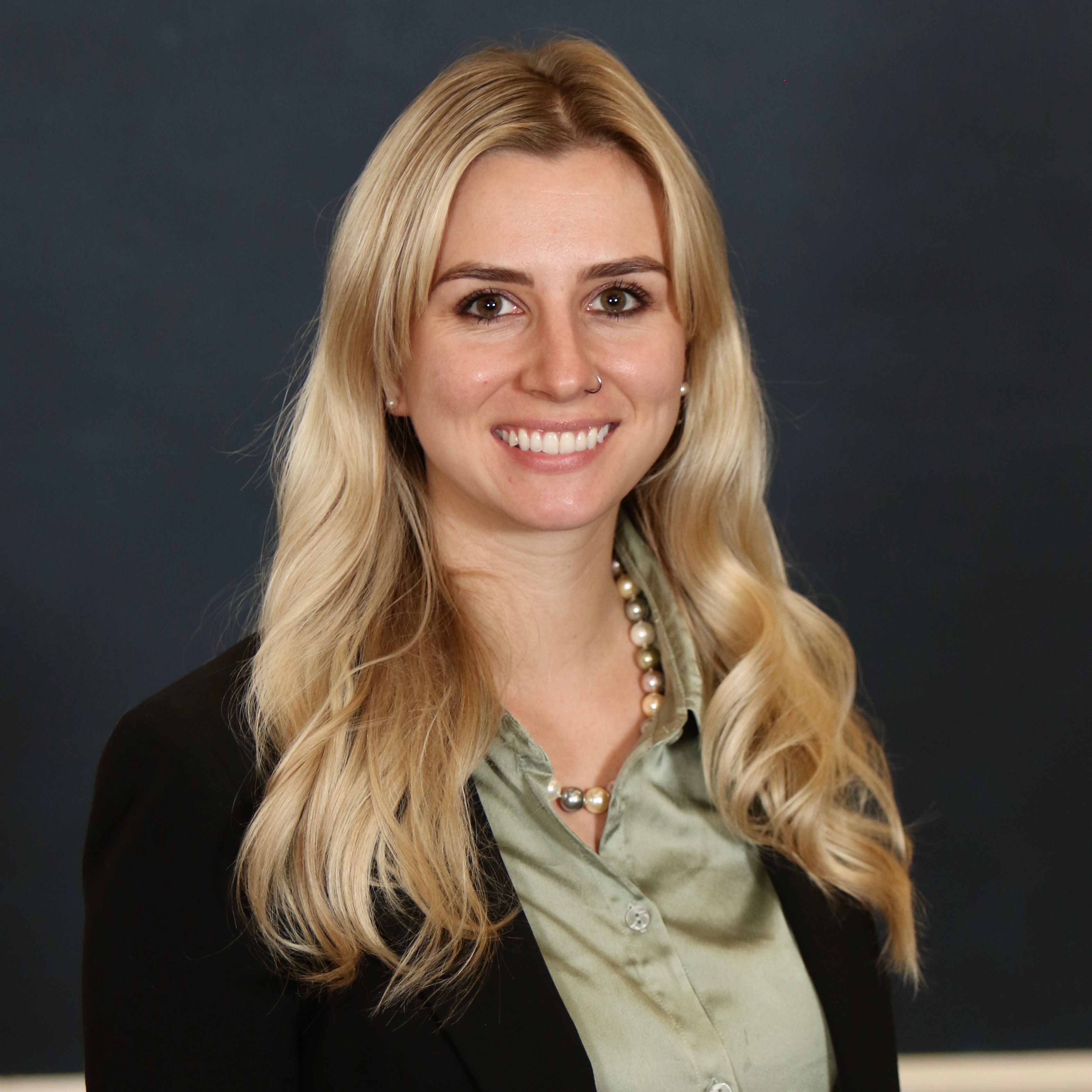
February 21, 2024
Leveraging Drug Delivery for Improved Health Equity: The Case of Oral Delivery of siRNA to Treat Inflammatory Bowel Disease
Olivia Lanier, University of Texas at Austin
4:00 p.m., Larrañaga Engineering Auditorium, Centennial Engineering Center
Abstract: In an address at the Convention of the Medical Committee for Human Rights in 1966, Dr. Martin Luther King Jr. stated, “Of all the forms of inequality, injustice in healthcare is the most shocking and inhumane.” Despite this call to action, there remains a great divide in health outcomes today with statistics that are staggering and unjust. As biomedical engineers developing the next generation of healthcare technologies, we are poised to either improve the health disparity landscape or further widen the gap. In this seminar, I will cover the 10 simple rules in biomedical engineering to improve healthcare equity that I developed and discuss how I applied these to my research in the nanotechnology and drug delivery realm.
I am currently applying these principles to replace infusion-based therapies for patients with inflammatory bowel disease (IBD) with an oral delivery platform that can be self-administered at home. IBD, including Crohn’s disease and ulcerative colitis, are life-threatening diseases associated with chronic inflammation of the digestive tract. IBD is associated with many health disparities and parenteral biologic therapy further potentiates these disparities as this type of delivery is costly and infusion-based therapies require aid from healthcare professionals, creating barriers to accessibility for patients with low socio-economic status; it is also shown that marginalized patients have higher mortality rates. Our work addressed the development of oral delivery platforms for small interfering RNA (siRNA) for the treatment of IBD, which will improve the accessibility of the therapy to the global population. siRNA can silence the production of specific strands of mRNA and is promising for the treatment for IBD by silencing pro-inflammatory cytokines released by macrophages associated with disease propagation. Challenges associated with the oral delivery of siRNA include the harsh pH of the stomach, enzymatic degradation, uptake of siRNA into macrophages in the intestines, and the need to undergo endosomal escape following intracellular delivery. Multi-layered systems have been developed with an anionic hydrogel that protects its payload through the stomach and expands to release siRNA-loaded cationic nanocarriers under pH conditions in the intestines. These nanocarriers are targeted toward macrophages where they release siRNA intracellularly and knockdown proinflammatory cytokine expression. Our tests have examined cytotoxicity and gene delivery capabilities of the cationic nanoparticles as a function of sex in macrophages derived from Hispanic patients.
Bio: Dr. Olivia Lanier is a researcher specializing in drug delivery, biomaterials, and nanotechnology, focusing on clinical applications associated with health disparities. Dr. Lanier received her B.S. in Chemical Engineering from Ohio University where she researched novel drug development systems for inflammatory diseases. Then, she received her PhD in Biomedical Engineering (BME) from the University of Florida (UF) in 2019 focusing on magnetically triggered delivery of placental proteins for wound healing. Subsequently, she was awarded the National Ford Foundation Postdoctoral Fellowship at Colorado School of Mines (CSM) and worked on ophthalmic drug delivery applications. Dr. Lanier is currently working with Dr. Nicholas Peppas as a Provost Early Career Fellow at the University of Texas at Austin (UT) on a range of social and medical problems related to the delivery of therapeutics. She is the author of 19 peer-reviewed publications and an inventor on 1 US patent application, has presented her research in more than 17 national and international conferences, and has been awarded numerous awards for her research and work in equity and inclusion including the Ford Foundation Fellowship and an NSF Emerging STEM Scholar Award. Dr. Lanier is an advocate for women and historically excluded groups in STEM. In these pursuits, she co-founded the IDEA student organization for BME and the DEI board for the College of Engineering at UF; she also co-founded and currently leads the undergraduate student organization, Biomedical Scientific Education and Equitable Design (B-SEED), focused on broadening participation in STEM at UT through promoting hands-on learning techniques and real-world clinical examples through a health equity lens. Additionally, she is passionate about inclusive teaching and mentorship, has helped create and taught the first health equity course at UT BME, and has mentored 20 undergraduate students in the laboratory, 16 of whom are included as co-authors on her published manuscripts.
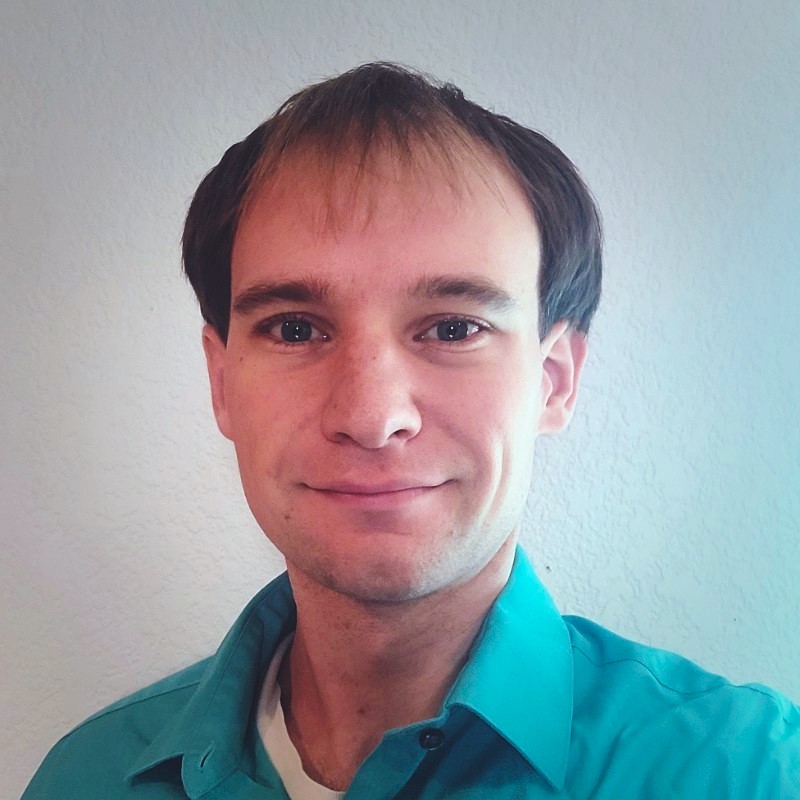
February 14, 2024
Uncovering active sites for C-H activation catalysis at Lewis acid-base pairs on oxides
Nicholas Jaegers, Postdoctoral Scholar at the University of California - Berkeley
4:00 p.m., Larrañaga Engineering Auditorium, Centennial Engineering Center
Abstract: Alkane dehydrogenation reactions are crucial to the production of a wide array of chemicals. Lewis acid-base (LAB) site pairs on ZrO2 exhibit remarkable reactivity for alkane dehydrogenation, with rates that rival those on practical Pt and Cr catalysts. These sites are readily titrated by trace levels of H2O and CO2, which bind strongly and require chemical treatments to remove surface titrants. Such treatments avoid catalyst sintering and annealing prevalent during thermal desorption protocols. The bare active site pairs were exploited for mechanistic investigation by means of kinetic rate and density functional theory assessments. Alkane dehydrogenation reactions on LAB site pairs proceed via heterolytic C–H activation of terminal –CH2–H bonds in alkanes. Such a pathway affords high selectivity to alkene products and does not require lattice-O removal nor reduction of Zr. The LAB sites remain free of alkane-derived species during steady-state catalysis enabling accurate predictions of alkene hydrogenation rates through thermodynamic links. These C–H activation reactions take place on the LAB site pairs which dissociatively bind H2O most strongly. The LAB sites of metal-oxide catalysts offer earth-abundant alternatives to toxic and platinum group metal industrial catalysts that exhibit comparable gravimetric dehydrogenation rates.

February 12, 2024
Autonomous alignment and healing in multilayer soft electronics using immiscible dynamic polymers
Sam Root, Stanford University
4:00 p.m., Larrañaga Engineering Auditorium, Centennial Engineering Center
Abstract: Self-healing soft electronic and robotic devices, like human skin, can recover autonomously from some forms of damage. Existing multi-layer devices generally employ a single type of dynamic polymer embedded with different functional nano–micro materials for each layer, to provide a cohesive interface between layers. In such devices, successful healing from damage requires precise manual alignment of the fractured interfaces, limiting functional recovery from diverse forms of damage. These limitations are especially prevalent for thin, multilayered devices. To overcome these limitations, we have designed a pair of dynamic polymers, which have immiscible flexible polymer backbones, but similar hydrogen bonding units distributed along the chain to providing selectively self-healing layers with similar viscoelastic behavior (and thus self-healing dynamics), while maintaining robust interlayer adhesion. Upon lamination, these immiscible dynamic polymers exhibit an interpenetrating and adhesive interface, whose width and toughness are tunable with processing temperature. When multilayered polymer films are misaligned after damage, upon thermal annealing, these structures autonomously realign during the healing process to minimize their interfacial free energy through a mechanism mediated by directional diffusion of polymer chains. Our experimental observations are captured by both coarse-grained molecular dynamics and continuum phase field simulations, suggesting the generality of the proposed mechanism to other pairs of polymer backbones or dynamic bonding chemistries. To demonstrate the utility of our approach, we fabricated several devices with conductive, dielectric, and magnetic particles that functionally heal after damage, enabling thin film pressure sensors, magnetically assembled soft robots, and damage-mapping electronic skins for surgical simulation training. Overall, this work provides a framework for fundamental investigations of interfaces of immiscible dynamic polymer networks and opens the door to entirely new applications of multilayered self-healing soft electronics.
Bio: Sam Root is a postdoctoral scholar with Zhenan Bao in the Department of Chemical Engineering at Stanford University. Sam earned a BS in Chemical Engineering at the University of Rochester in 2014, and then a PhD in Chemical Engineering from UC San Diego in 2018 with Darren Lipomi, where he investigated the mechanical behavior of thin films of semiconducting polymers. He completed three years of postdoctoral training at Harvard University with George Whitesides, where he designed polymer-based soft robotic systems and investigated charge transport through molecules in self-assembled monolayers. He joined the Bao Group at Stanford in 2021, where he is investigating interfaces of immiscible dynamic polymers and their self-healing behavior in multilayered soft electronic composites. Sam’s scholarship has been recognized by numerous awards including the Achievement Reward for College Scientists, the UC Dissertation Year Fellowship, and he has recently been named a 2023 “Rising Star in Soft and Biological Matter” by the University of Chicago’s Materials Research Center.
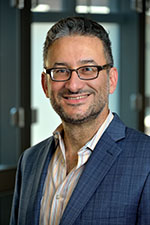
January 31, 2024
Atomistic simulations of defects in semiconductor silicon: Computational experiments and modeling
T. Sinno, University of Pennsylvania
4:00 p.m., Larrañaga Engineering Auditorium, Centennial Engineering Center
Abstract: Atomistic simulations based on empirical potential models have enabled investigations of a diverse range of structural, thermodynamic, and kinetic phenomena in single-crystal and multicrystalline silicon. A particular area of emphasis has been the study of crystallographic defects, which play important, multifaceted roles in establishing the quality of the silicon material for microelectronic and/or photovoltaic applications. In this presentation, I will discuss two examples of such studies related to defect formation and evolution in crystalline silicon environments.
In the first example, large-scale molecular dynamics simulations are used to probe the complex evolution of clusters of self-interstitials. Processes common in the fabrication of microelectronic devices, such as ion implantation of dopants, often result in large supersaturations of intrinsic point defects and ultimately in the nucleation and growth of large defect structures that are highly detrimental. In the case of self-interstitials these structures include both three-dimensional and planar assemblies with various orientations. Selection among these configurations is shown to be driven by entropic factors leading to a rich thermo-kinetic phase diagram. These entropic factors are discussed in the context of the ’energy landscape’ of the material. In the second example, the interaction of common impurities, namely carbon and oxygen, with grain boundaries is analyzed. While the presence of grain boundaries is highly undesirable in microelectronic applications, so-called multicrystalline silicon, which contains grain boundaries, is relevant for photovoltaic device fabrication. Here, Monte Carlo simulations are used to generate a model picture based on adsorption isotherms to reveal how different types of coherent grain boundaries act as sinks or sequestration sites for impurity atoms.
Together, these two examples are intended to provide a small sample of how various advanced atomistic simulation techniques may be used to compute defect-related properties that require the consideration of many atoms.
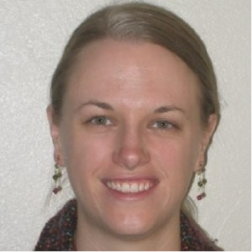
January 17, 2024
Fundamentals of Dynamic Light Scattering and Zeta Potential Analysis with Brookhaven Instruments
Nancy Bush, Sales Engineer, Brookhaven Instruments
4:00 p.m., Larrañaga Engineering Auditorium, Centennial Engineering Center
Abstract: Brookhaven Instruments has specialized in designing and manufacturing light scattering instruments for 43 years. Nancy's talk will discuss how benchtop Dynamic Light Scattering (DLS) and Zeta potential analysis instruments are used to determine size and stability of sub-micron particles suspended in liquids. These instruments might be used to develop a new coating for metals, a targeted therapy for cancer, or a catalyst for a refinery. In this presentation you will learn how DLS/zeta potential instruments work, how particle size and zeta potential are calculated by the instrument software, and the basics of data interpretation and sample preparation.
Bio: Nancy Bush has been a Sales Engineer for Brookhaven Instruments for the past 2 years. She travels throughout the western U.S. to sell instruments and provide training and technical support. She also exhibits at conference tradeshows for professional societies such as the American Chemical Society, Society of Cosmetic Chemists, Institute of Food Technologists, and American Water Works Association.
Nancy earned a B.S. degree in chemistry from the New Mexico Institute of Mining and Technology (New Mexico Tech) in 2007. She has 9 years of laboratory research experience where she studied energetic materials, heterogeneous catalysis, nanomaterials synthesis, geochemistry, and natural product drug discovery. This background combined with recent sales experience helped prepare her for her current role.
